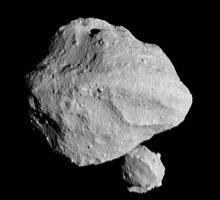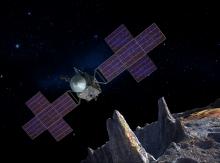Listen to today's episode of StarDate on the web the same day it airs in high-quality streaming audio without any extra ads or announcements. Choose a $8 one-month pass, or listen every day for a year for just $30.
You are here
Dangerous Asteroids II
75 years ago today, lunchtime at the Gage Ranch, near Marathon, Texas, was interrupted by a surprising visitor: a space rock. It slammed into a swimming hole with a bang, breaking apart and splashing mud and water up to a hundred feet away. Two dozen people were close enough to see or hear the impact, and one even saw the rock falling through the sky.
It was named the Peña Blanca Spring meteorite. It fractured when it hit, but workers gathered about 155 pounds of it.
The original rock may have been a fragment of an asteroid that passes close to Earth. Sometimes, though, an entire asteroid hits Earth. If the asteroid is big enough, that can be catastrophic. So astronomers are searching for all the asteroids that could pose a threat.
With enough warning time, we might be able to deflect an asteroid. If the warning time is short, though, there might be just one solution: nuke it.
If a bomb exploded near the asteroid, it would vaporize material at the surface. That would create a “jet” of hot gas that could nudge the asteroid. And an explosion inside the asteroid might blow it apart and push the pieces safely away.
To make the bomb work most efficiently, planners would need to know many details about the target asteroid. So astronomers are studying asteroids to learn more about them. Scientists also are studying bits of meteorites in the lab — providing key details to help protect us from falling space rocks.
Script by Damond Benningfield





